10 Supercomputers That Will Blow Your Mind
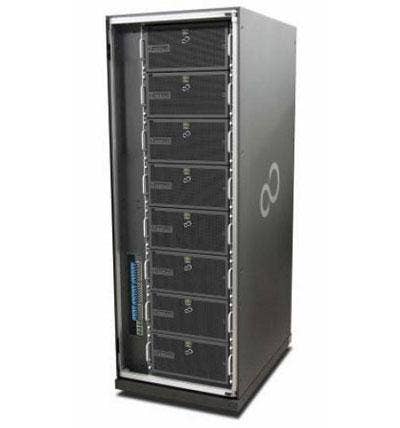
Supercomputing, or high performance computing (HPC), recently had another moment in the spot light when IBM's Roadrunner was installed. Aside from moments when a machine operates at one pentaflop -- or when it plays a game of chess with a grand master -- you might not always hear about the technology. But, with the attention Roadrunner garnered, it's time to take another look at some other supercomputing machines that are processing calculations at seemingly impossible speeds.
FX1 by Fujitsu
The Fujitsu FX 1 is currently only available in Japan and is currently doing work for the Japan Aerospace Exploration Agency (JAXA). The supercomputer is being put to work using numerical simulations that will help develop rockets, air craft and advanced space exploration systems. The core of the system is comprised of 3,392 FX1 parallel computing nodes that equates to a peak theoretical calculating performance of 135 TFLOPS.
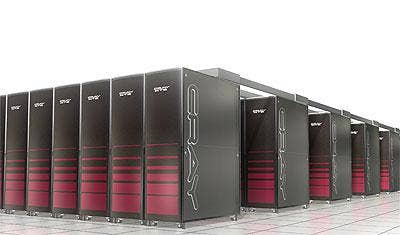
XT5 by Cray
The Cray XT5 supercomputer is designed for scalability. The XT5's cabinet can accommodate XT4 and XT5 computer blades, allowing users to up their processing power in a single space and add onto existing capabilities. The compute nodes that form the basis of the system are built with AMD chips and can be customized for specific needs. The supercomputer is compatible with a number of different compilers and libraries, including C, C++, Fortran90 and high-performance math libraries such as BLAS and FFTs.
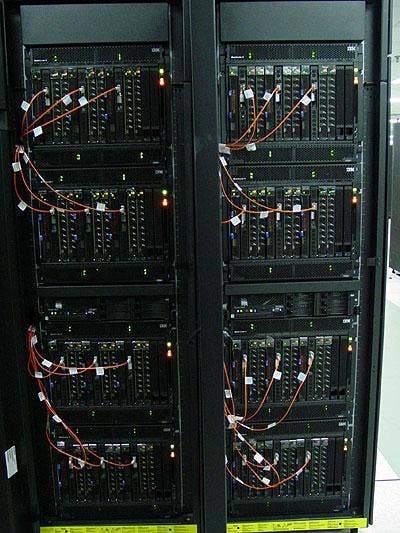
Roadrunner by IBM
IBM's mammoth Roadrunner recently broke the petaflop barrier and is billed as the faster computer in the world. The supercomputer was built for the Department of Energy's National Nuclear Security Administration to keep a close eye on the country's nuclear weapons stockpile. Run by blades, three of the 3,456 tri-blade units have the same power as the fastest supercomputer in 1998.
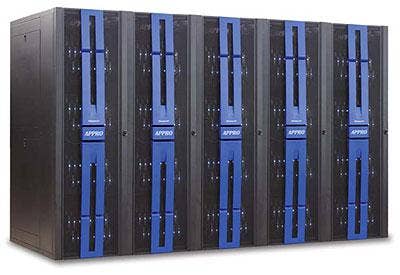
Xtreme-X2 by Appro
In addition to having one of the, well, more extreme names of any super computer, the Xtreme-X2 by Appro is built for environments where HPC is needed. Electronic design automation, aerospace and automotive engineer simulations, petroleum exploration and scientific visualization for petroleum exploration are the scenarios Appro envisions its behemoth to best function in. Not only does the X2 help with calculations, it also helps with the environment. Directed Airflow reduces the supercomputer's footprint in the data center and helps with energy efficiency.

SX-9 by NEC
The SX-9 by NEC boasts large-scale memory of 1TB and ultra high-speed interconnects achieving speeds up to 128GB/second. Building on existing vector architecture, the SX-9 added an arithmetic unit and an increased number of vector pipelines. The vector processing has been integrated into a single chip using CMOS technology. Through the use of high-density packing, memory processors and storage are implemented on a single chip that allows for better efficiency and cooling performance.
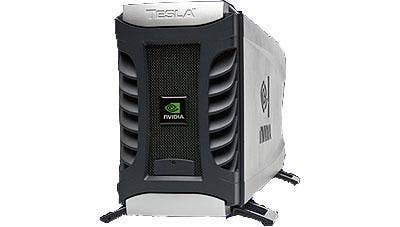
Tesla D870 by NVIDIA
The Tesla D870 by NVIDIA allows users to get HPC on their desk in a single, quiet package. The D870 has 256 streaming processor cores and the CUDA C-language developer environment standard. Multi-threaded computing architecture lets the D870 execute thousands of concurrent parallel threads for mathematically intensive problems. The Tesla D870 can connect to a host via cabling or a low power PCI Express x8 or x16 adapter card.
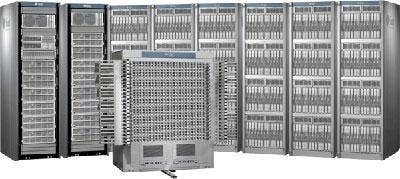
Sun Constellation System
The Sun Constellation System offers users a petascale computing environment in a dense environment. Constellation combines HPC, networking, storage and software into a single integrated system. The Sun Fire X4500 provides four-way x64 and high density with up to 48TB of memory in 4U of rack space. The Sun Blade 6048 Modular System has the capacity for 192 sockets per rack, providing users high computing performance.
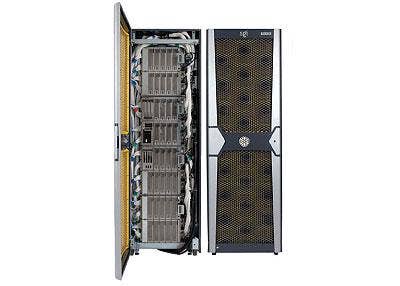
Altix 4700 by SGI
The Altix 4700 is compromised of modular blades that provide users the ability to plug the supercomputer in and let it run, all while delivering over 1 teraflop per rack. Upgrading processors and memory isn't a problem with the 4700, because it is built for easy expansion. Powered by Dual-Core Intel Itanium Processors, Altix had the future in mind in its design. Peer I/O allows the Altix 4700 to support new computing paradigms when they become necessary to install.
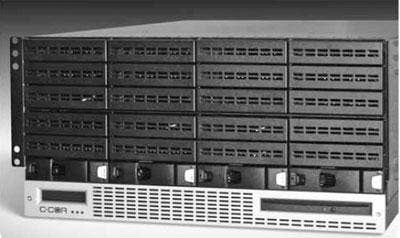
N5 Video Server by C-COR
The C-COR n5 Video Server is different from other supercomputers because its main functionality doesn't benefit the aerospace industry. Instead, the n5 is designed for video. Users of older generations of C-COR video servers can hot swap the existing servers with the n5 and not have to worry about the cost of full upgrade replacement costs. MatchNode technology lets multiple servers feed the same service groups. And approximately 300 streams per rack will help reduce operating costs while increasing the quality of service.
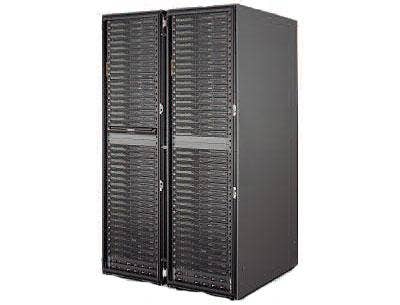
Platform 3000, 4000 and 6000 Clusters by HP
The HP 3000, 4000 and 6000 HPC clusters use 1U and 2U servers as the basic computing blocks of the systems. InfiniBand and Gigabit Ethernet are available across all clusters and provide high computing, low latency, scalable HPC. Users can further customize the HPC solution by building on the modular frame work of the 3000, 4000 and 6000 basics by choosing Intel or AMD processors to best fit computing needs.